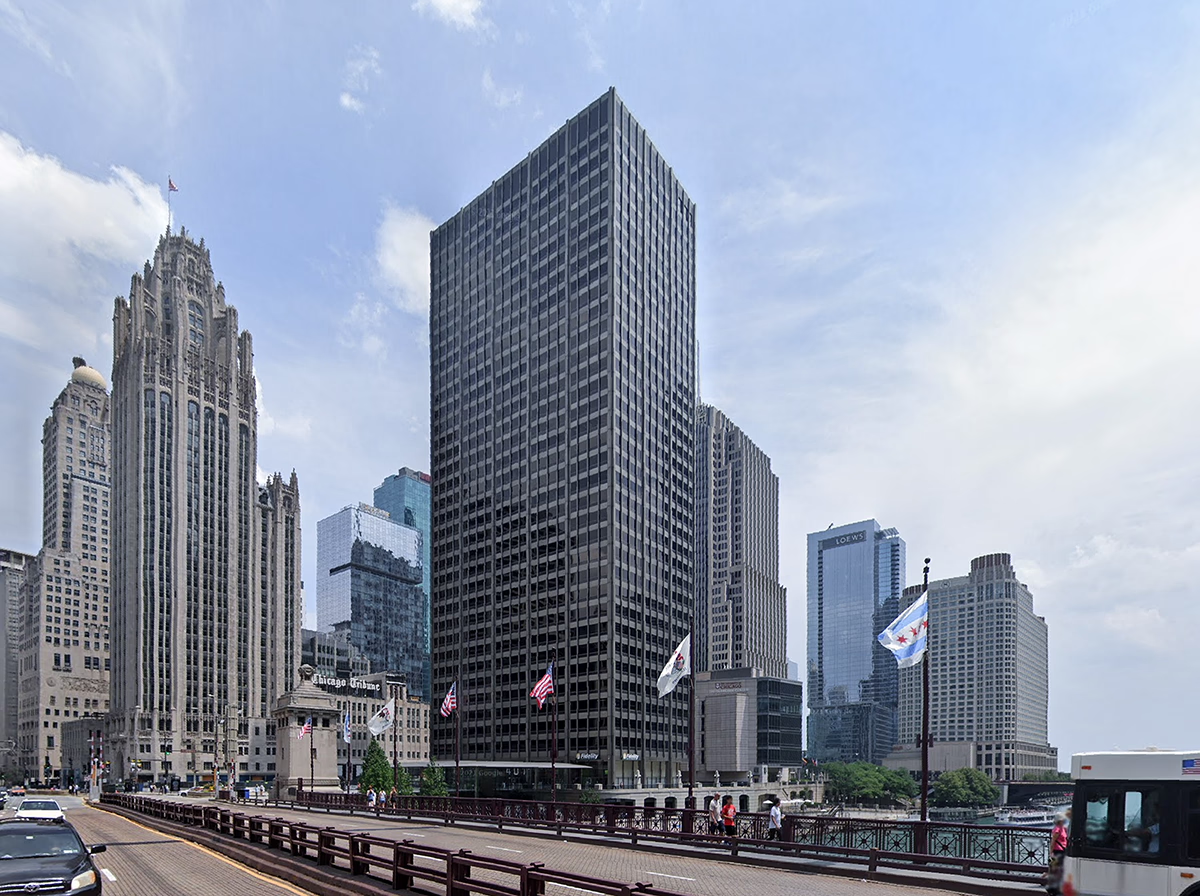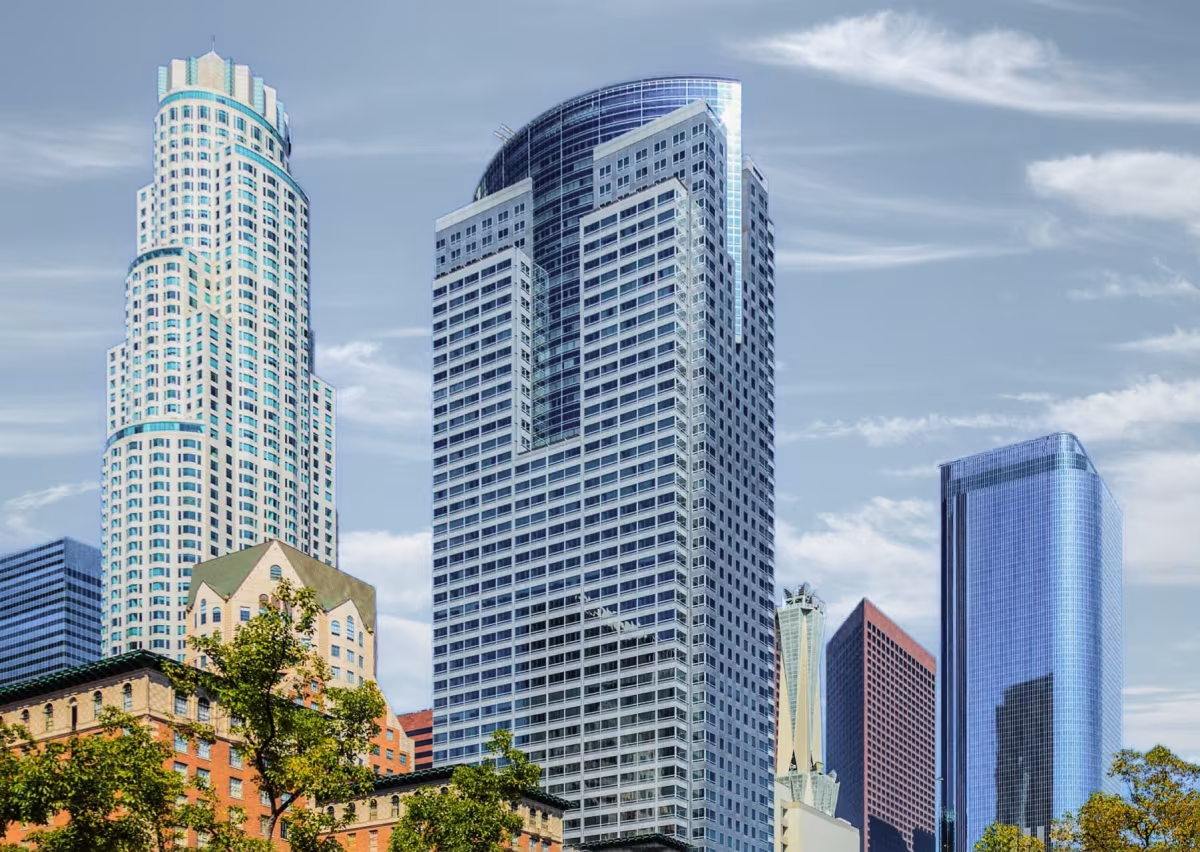Equitable Building vs Gas Company Tower


Comparing the Equitable Building and the Gas Company Tower is compelling because they were both designed by Skidmore, Owings & Merrill, yet they stand in different cities (Chicago, IL and Los Angeles, CA), and were completed over two decades apart.
What this will allow us to see, is how the same firm's approach adapted to different places in different periods of time.
Height & Size
The Gas Company Tower is clearly the larger tower of the two, both in terms of height and number of floors. It rises to 748ft (228m) with 52 floors above ground, while the Equitable Building reaches 456ft (139m) with 35 floors above ground.
Of course, each project may have faced different briefs or regulatory constraints, which we don't really know about and could also explain the outcome.
Architectural Style
The Equitable Building was designed in the International Style style, while the Gas Company Tower reflects the principles of Postmodernism.
The Gas Company Tower represents a late expression of the Postmodernism, a style already in decline in 1991 when it was completed. By contrast, the Equitable Building followed the then mainstream International Style, embodying the dominant architectural direction of its time.
With 26 years between them, the comparison also reflects how quickly architectural priorities can shift from one dominant language to another.
Uses
Both the Equitable Building and the Gas Company Tower were designed to serve as commercial towers, and that has remained their main use since their completion, serving similar roles in the urban fabric.
Structure & Facade
The two towers rely on different structural systems, reflecting distinct engineering strategies.
The Equitable Building uses a Framed Tube In Tube structural system, which combines a strong central core with a perimeter tube of columns, while the Gas Company Tower uses a Frame system, that relies on a regular grid of columns and beams to sustain its weight.
Yet, when it comes to their facade, they both employed the same solution, a Curtain Wall facade.
A curtain wall is a non-load-bearing facade hung from the structural frame. It is anchored to floor slabs and transfers only its own weight and wind loads, allowing for sleek, glassy exteriors.
| Equitable Building | Gas Company Tower | |
|---|---|---|
| Skidmore, Owings & Merrill | Architect | Skidmore, Owings & Merrill |
| 1963 | Construction Started | 1988 |
| 1965 | Year Completed | 1991 |
| International Style | Architectural Style | Postmodernism |
| Commercial | Current Use | Commercial |
| 35 | Floors Above Ground | 52 |
| 139 m | Height (m) | 228 m |
| 74,000 m² | Usable Area (m²) | 133,026 m² |
| Framed Tube In Tube | Structure Type | Frame |
| Steel | Vertical Structure Material | Steel |
| Concrete | Horizontal Structure Material | Concrete |
| Yes | Facade Structural? | No |
| Aluminum, Glass | Main Facade Material | Glass, Steel |
| Equitable Insurance Company | Developer | Thomas Properties Group |
| IL | State | CA |
| Chicago | City | Los Angeles |
| 401 North Michigan Avenue | Address | 555 West 5th Street |